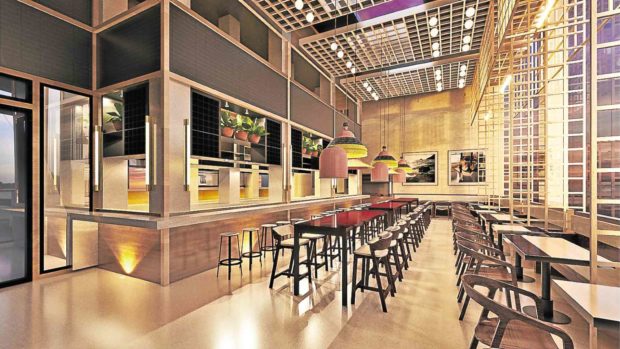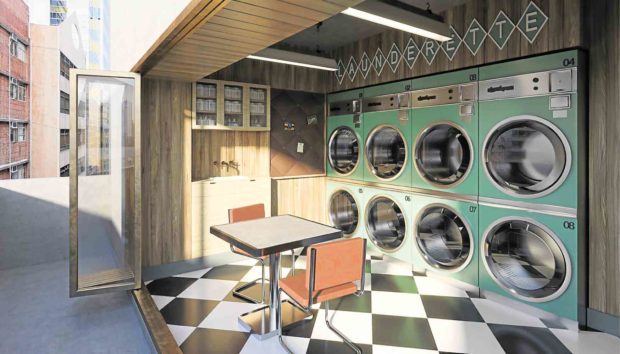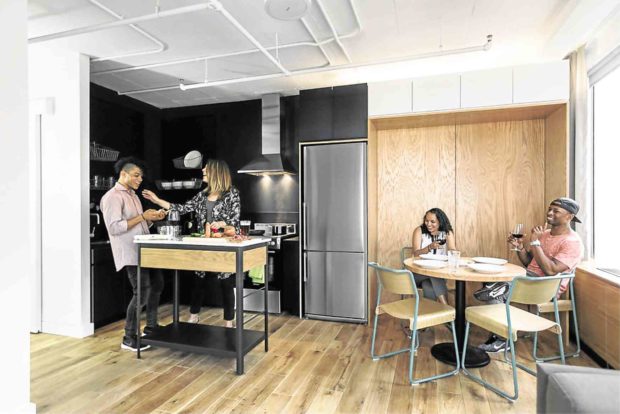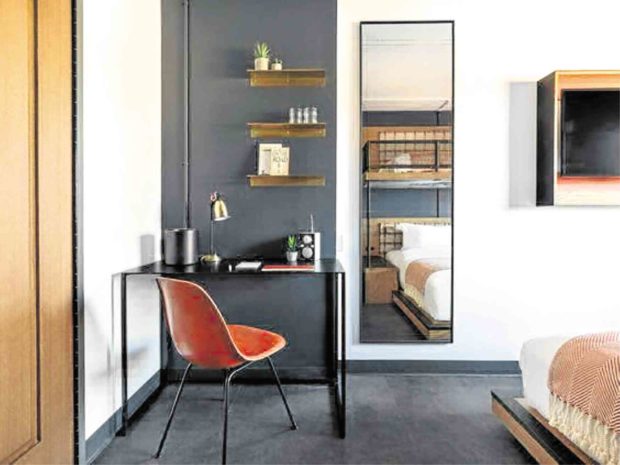Investing in shared spaces

F&B concept for Lub’D as designed by JJ Acuna/Bespoke Studio (Image courtesy of JJAcuna/Bespoke Studio)
Last month, Hong Kong-based designer Andre Fu unveiled a beautiful multi-program living room concept at the New World Development’s Artus—a luxury, long stay fully-serviced apartment at the city’s new Victoria Dockside development.
While Artus is a far cry from “dorm living” as it caters to travelers who spend thousands of dollars a month for long stays, the living room and much of the public areas designed by Fu are filled with art, sculptures, books, and various seating and lounging options, allowing one to simultaneously work and entertain guests, taking its design cues from the hybrid lifestyles that most expect to experience today.
In an age when almost everyone can claim to be both a creative and an entrepreneur, the lines between workspaces and domestic spaces have blurred significantly.
Property owners, hospitality operators, and office lessors now consider that today’s generation of urban dwellers live hybrid lifestyles, lounging with beers while at work, and finishing important tasks in the bedroom.
New necessity
Hong Kong reflects trends in other major cities where hybrid co-working and co-living have become a necessity as property prices skyrocket.

The Nate’s co-living laundry room in Hong Kong, as designed by Charlie & Rose (Image courtesy of The Nate)
Real private office spaces and homes in prime urban locations are most likely now out of reach for most millennials. New university graduates and a foreign expat workforce transitioning into the 9-to-5 world are the ones most likely to take advantage of the co-living life.
The “co” in co-living represents a ready made “community” of like individuals, who find comfort in enjoying downtown urban life without renting expensive property.
Co-living in the heart of urban centers offers a new market the chance to work and be a part of the action, while having the familiarity and fraternity of dorm life.
New market
In the case of Manila, new properties are cropping up with the co-living program as a business model. While the market profile of young Manileños are slightly different to that of their counterparts in other major cities in the region, these co-living spaces allow a chance for many to sleep and live close to where they work, and where they want to work is definitely where the action is, right in the middle of Makati or BGC.
Many designers are now working with property developers and operators to create unique concepts for this new market. Our design studio, JJ Acuna/Bespoke Studio, recently completed a hybrid chill-out space and F&B Hall by celebrated Chef Nicco Santos, for the Thai co-living brand, Lub’D in Makati’s cool Poblacion District.
When we designed our restaurant, we made sure to to create proportions, materials, and textures that are warm, open, friendly, and a space where people can come back to again without being too cold, corporate, luxury, or overbearing.
The Nate, a new co-living project in Hong Kong designed by the design agency Charlie & Rose, and all the new WeLive concepts popping up all over the world designed by the New York-based The We Company’s in-house design team, put emphasis on the public shared spaces, from laundry/game room areas, to the lounges, libraries, and cafeterias.
Developers may want to scrimp on private spaces and splurge on public areas, but it is really important that private areas need to work for a human adult and not a child, student, or a minimum-wage slave.
Co-living spaces need to value one’s rest and relaxation, ensuring that personal, private time is just as important as community, camaraderie, and networking. My personal advice is to stop creating loud, obnoxious, gimmicky Instagram-friendly spaces, and instead create spaces with a focus on comfort, ergonomics, acoustics, and lighting, made with good materials and craftsmanship.

WeLive in Crystal City Washington DC designed by Perkins Eastman (Image courtesy of Perkins Eastman)
With so many individuals now staying in these co-living spaces at any one time, developers and designers need to make sure these spaces can still add to the value of a guest’s quality of life, rather than merely serving as a pit-stop on the long stressful road to adulthood.
